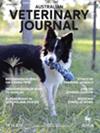Understanding barriers to reducing antimicrobials on Australian dairy farms: A qualitative analysis
Abstract
Introduction
Reducing antibiotic use in production animal systems is one strategy which may help to limit the development of antimicrobial resistance. To reduce antimicrobial use in food-producing animals, it is important to first understand how antibiotics are used on farm and what barriers exist to decreasing their use. In dairy production systems, mastitis is one of the most common reasons for administering antimicrobials. Therefore, it is important to understand the motivations and behaviours of dairy farmers in relation to the diagnosis, treatment and prevention of mastitis.
Materials and methods
In this study, we interviewed a sample of dairy farmers and dairy industry professionals from the major dairying regions of eastern Australia regarding their current practices used to diagnose, treat, and control subclinical and clinical mastitis. Inductive thematic analysis was used to code interview transcripts and identify the recurrent themes.
Results
Four overarching themes were identified: (1) the challenges associated with the detection and diagnosis of clinical mastitis, including with laboratory culture, (2) the motivations behind treatment decisions for different cases, (3) decisions around dry cow therapy and the role of herd recording, and (4) concerns regarding the development of antimicrobial resistance.
Discussion
This study identifies several challenges which may limit the ability of Australian dairy farmers to reduce antimicrobial use on farm, such as the need for rapid and reliable diagnostic tests capable of identifying the pathogenic causes of mastitis and the difficulties associated with conducting herd recording for the implementation of selective dry cow therapy. Industry professionals were concerned that farmers were not using individual cow records to aid in treatment decisions, which could result in unnecessary antimicrobial use. The results of this study can act as the basis for future research aimed at assessing these issues across the broader Australian dairy industry.

 求助内容:
求助内容: 应助结果提醒方式:
应助结果提醒方式:


